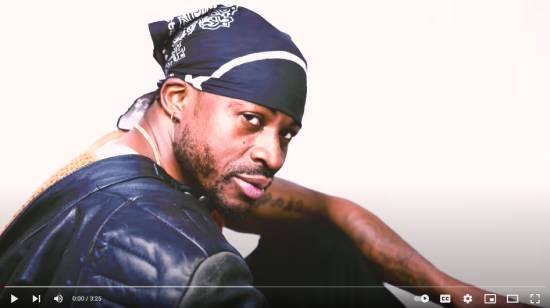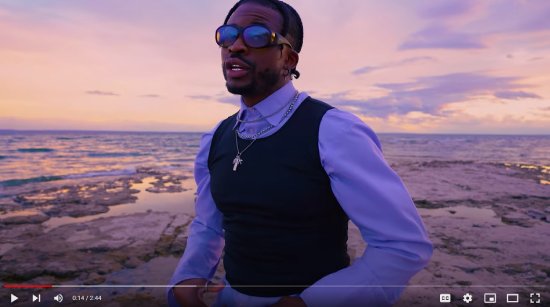Even before they got started, you could say that Toronto R&B duo Spiritsaver had one up on the competition.
Prior to the duo of Zale and Tajudeen releasing last year’s psilocybin-inspired joint “I’m High, Have You Met Me?,” they were – and still are – being mentored by two of Canada’s brightest production gurus, 2023 Grammy Producer of the Year nominee Matthew “Boi-1da” Samuels (Drake, Beyoncé, Kendrick Lamar, Jack Harlow, Travi$ Scott) and Grammy-nominated producer/songwriter Stephen “Koz” Kozmeniuk (Dua Lipa, Kendrick Lamar, Madonna, Nicki Minaj).
“We’re really fortunate to be able to push ‘play’ on the music for guys like Stephen Kozmeniuk and Boi-1da,” says Zale. “People who are mentors, and that we work closely with, and get their opinions. That’s like having the top A&Rs to be able to bounce ideas off of. We’re very grateful for our network, one that we’ve been building for our whole lives.”
Zale’s not kidding when it comes to mentioning lifelong connections, which extends to Nigerian-born singer Tajudeen, whom he met at age 12 at The Lair Studios.
Zale’s built up a bit of a heavyweight track record himself, working in the producer’s chair for such megastars as Eminem, Kanye (now Ye) West, Nicki Minaj, Jennifer Hudson, Meek Mill, and Childish Gambino – both individually and as half of the songwriting-production duo The Maven Boys. But he got his start at the age of 13, handling the MySpace page for Boi-1da, creating beats with him two years later, and eventually signing with his production company when he was 18.
“I have a long history with 1da,” Zale explains. “Then I met Koz, brought him into 1da’s system. At the time, Koz was doing two-a-days, he was doing a lot of synch/advertising music and pop stuff from 8:00 a.m. to 6:00 p.m. Then I’d pull up on him and we’d work until 2:00 a.m. on stuff to pitch to 1da. We got a bunch of cuts together; there’s a whole family relationship there that’s deeper than music. It’s the same thing with T [Tajudeen]: We’re all friends before the music thing, and it’s more like a brotherhood. Everybody wants to see everybody else shine.”
While Zale and Tajudeen have known each other for a lifetime, their new Spiritsaver project is fresh out of the gate.
“We wanted to control our own destiny,” says Zale. “And we wanted to be able to make the art we want to make. There’s a lot of politics on both sides of the industry, whether you’re behind the scenes or you’re the artist. The difference is, we can take our careers by the horns, and do what we need to do to make sure the music comes out the way we want it to come out.
“We wanted to control our own destiny” – Zale
“When you’re working behind the scenes, you’re kind of giving your art away, and trusting the artist to make the right decisions. Being the artists, we’re able to make the art that accompanies the music. It’s not just about writing songs: it’s about building a brand, showing the lifestyle, and doing all these extra things that are a lot of fun – photo shoots, shooting music videos, and making content.”
Tajudeen calls Spiritsaver’s music “destiny-written soul,” and says the chemistry between the two was immediate, as evidenced by their first two songs: “I’m High, Have You Met Me,” which garnered 33,000 YouTube views in a single month, and their current ballad, “Killing Us Slowly.”
“That’s why we gelled so fast: This has been marinating for a while,” says Tajudeen.
Zale says, “I’m High, Have You Met Me?” was inspired by magic mushrooms. “We started writing that song after I had dabbled with a psychedelic experience,” he says. “It’s based on a trip, astral projection (when the soul leaves the physical body). It’s kind of like a rebirth. The experiences you have in that other dimension – and then the re-integration – is what the Spiritsaver project is for both of us. And the name, too.”
“Killing Us Slowly” is a song about heartbreak, says Zale. “It’s about getting into something too soon,” he explains. “The beginning of the relationship can start fast and take off, and sometimes it may be based more on attraction than the right type of fit. We wanted to look at a love story from that perspective: Looking at the relationship from outside, as a greater idea of, ‘We’re both at fault here.’”
Zale notes that the two songs are derived from approximately 15 other songs they have in various stages of completion. “I come from a producer background, so I make the beats,” he says. “I’ll be creating music on my computer with T in the room, and he’s more of a melody guy. So, he’ll start going off on some melodies, and then I’ll start shooting lyrics at him. Then, we start building something freestyle, and see where it goes. We’ll get in a vibe, and once we feel we have something, we zero in and start arranging all the melodies. Then if there’s a concept there, we figure out the hook, lock it in, and work on the verses.
“We re-write a lot. We’ve probably re-written, like, 10 different versions of ‘Killing Us Slowly’ alone. We’re always experimenting and trying to get it right.”
The next step for Spiritsaver is working on their live show, which they’ll debut at some point in 2023. They also aim to release a new song every four to six weeks, and, in Zale’s words, “stay consistent.” “We’re trying to do everything from a place of originality, and a place where it’s not about ego,” he says. “It’s just about telling our stories, and doing it in an original way that we feel that people can relate to. Music is a way for people to overcome things in their life, and look at it from a fresh perspective.”

